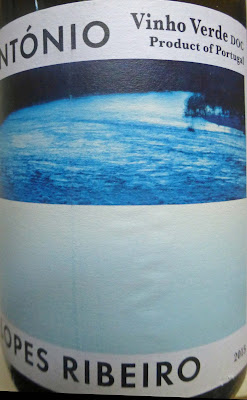Cad a dhéanfaimid feasta gan Karwig's?
Especially for German wines like these two.
Hard to believe it's already 12 months since Karwigs Wine closed. These are some of the wines I bought on my second last visit. I still have some - need to get my act together!
Georg Müller Hattenheimer Nussbrunnen GG Riesling Trocken Rheingau 2015, 13%, Karwig Wine
 Only the very best German vineyards get to display the "VDP.Grosse Lage" designation on their bottles and it is on this one that I bought during Karwig’s closing-down sale last year. Not too sure where, or even if, you can get it in Ireland now. But if you see one, don’t hesitate!
Only the very best German vineyards get to display the "VDP.Grosse Lage" designation on their bottles and it is on this one that I bought during Karwig’s closing-down sale last year. Not too sure where, or even if, you can get it in Ireland now. But if you see one, don’t hesitate!
There are various grades of VDP, which is a German wine group representing many of the country best producers. “Wines from these vineyards shine through their uniqueness and distinctiveness…. also distinguished by their unparalleled ability to express the essence of a vineyard.” VDP is not a legal term but reflects the group's own private regulations.
The Nussbrunnen in Hattenheim, a south-southeast facing vineyard, is just a short trip up from the bank of Rhine and has deep loess soil with, importantly, an excellent water supply in dry years.
This Riesling’s colour is Light straw with greenish tints. Don’t think I’ll ever like that petrol in the aromas but have learned to live with it! Also some herby notes there, floral traces too, even a little touch of dough. Petrol on the nose but electric on the palate, juicy, rounded fruit, so elegant, with a refreshing acidity, this concentrated wine is tarty dry and concludes up with a deep and persistent finish. Very Highly Recommended.
Kilian Hunn Spätburgunder 2013 (Baden, Germany), 13.5%
Did you know that Germany, after France and the US, is the third largest producer of Pinot Noir in the world? They’ve been growing it for a long long time, especially around Baden. According to a Fortune magazine article, here, it seems Emperor Charles III brought the grape to Germany from Burgundy in 884.
Germany prices give plenty of bang for your buck and its style is no longer an imitation of Burgundy. With Burgundy prices on the rise, “so Germany is ready to fill the void” - see more of this excellent insight here.
Kilian Hunn was always a favourite of mine at Karwig’s before they closed last summer and I got this Spätburgunder (Pinot Noir) during the closing down sale. Regular price was €18.30 and they had it reduced to 10.50 .
Colour is mid to dark ruby. Aromas are quite intense, dark berries, plum, slight touch of spice. Fruity, well-integrated oak, medium-bodied, smooth tannins and quite harmonious and a persistent dry finish. That balance is just about perfect, no raw edges here at all. Highly Recommended.

























